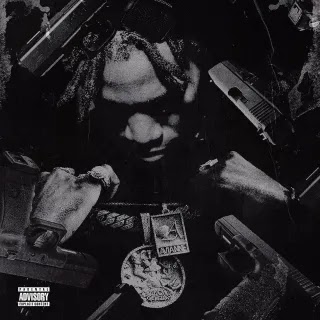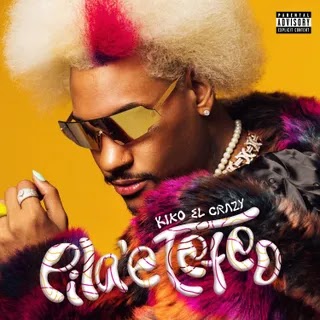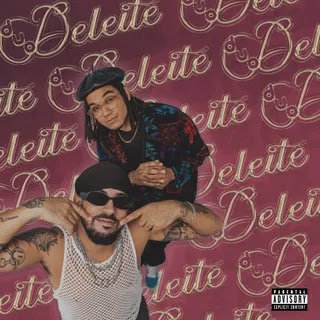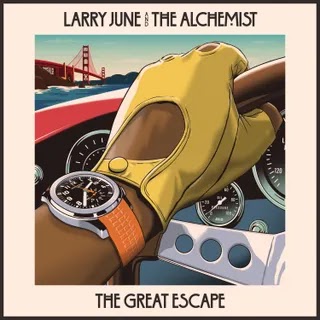Each Sunday, Pitchfork takes an in-depth look at a significant album from the past, and any record not in our archives is eligible. Today, we revisit the New York rapper’s unsuspecting 2001 debut, a breath of fresh air for a city who needed it.
Everything Fabolous knew could be found in blocks encompassed by the Brevoort Houses in Bed Stuy, Brooklyn. There, his personality developed: skeptical, quiet, unbothered, the type to stand around the freestyle circle but never contribute a verse himself. Throughout his childhood, he watched hip-hop blossom in Brooklyn, from the sound of the underground to something he couldn’t walk out of his home without hearing. One of the first rappers he became enamored with was Big Daddy Kane, his swag was undeniable—the chains, the high-top fade, Madonna—and everyone in the neighborhood had a story about Biggie Smalls and Lil’ Kim. In high school, before he was known as Fabolous, and before his debut album was released on September 11, 2001, the kid born John Jackson would draw at an art and design school in Midtown Manhattan, another world. But even as he traveled to the city, he couldn’t help but notice rap’s impact around him—it was the soundtrack of neighborhood fish fries and basketball games, and he would hear about hip-hop duo Smif-N-Wessun outside like local celebrities. He wanted to have that effect.
After a few small-time recordings, Jackson laid down a verse on a local producer’s flip of Puff Daddy’s “It’s All About the Benjamins.” The track became a neighborhood hit and eventually, the word spread to Queens-born party promoter and manager Kevin Webb. Together, they recorded a proper demo, and Webb made a promise that he could get Jackson’s music to the ears of a DJ who was breaking hits in New York like a one-man WorldStarHipHop.
DJ Clue, raised in Jamaica, Queens, was a pioneer of the rap mixtape. In the 1990s, after landing an internship at RCA, Clue began to get access to unreleased exclusives. His mixtapes, known as Clue Tapes, were essentially curated playlists and goldmines for everything New York hip-hop. Coated with his signature DJ drops, Clue Tapes were launching pads for iconic New York rap records of the ’90s from Method Man to JAY-Z to Biggie. Often his tapes would include songs acquired without permission, like the time he ignited a beef with Bad Boy Records after leaking a track from Ready to Die and Biggie traveled to the Bronx with a gun in search of Clue. But by the time 1997 rolled around, Clue’s platform was so powerful—from the clubs to the streets—that Diddy invited him to get an advance listen of Biggie’s Life After Death and choose any two songs to include on a mixtape. Clue chose two records that would become timeless: “Hypnotize” and “Mo’ Money Mo’ Problems.” Hot 97, New York’s premier radio station, desperately wanted access to the pair of Life After Death songs so they began to spin the records with Clue’s DJ tags still attached. The success led to Hot 97 recruiting DJ Clue for his own show on the station, “Monday Night Mixtapes.”
Kevin Webb had known DJ Clue from parties he used to throw—Webb would secure the venue, Clue would DJ. Webb played the demo for Clue’s partner and manager, Rich Skane. “Yo, I heard some stuff from this kid, he sounds aight,” Skane said to Clue. “You should check him out.” Clue invited Jackson to meet him at Hot 97. In 1998, Jackson, at this point a high school senior who had yet to even form an official rap pseudonym, pulled up to Hot 97 with an Avirex jacket draped over his lanky frame, expecting nothing more than a typical sit-down meeting. But that day, he would leave Hot 97 with a rap name and the support of hip-hop’s most influential DJ.
In 1998, the New York rap dream was simple: secure a record deal and get a song played on Hot 97. When Jackson arrived, Clue was fumbling around the radio station’s headquarters and told Jackson to wait in the studio with Noreaga, who at the time was one of New York’s hottest rappers. After a commercial break, Clue told Jackson and Noreaga they were going to freestyle live on Hot 97’s airwaves. Clue dropped the beat for The Lox’s “Money, Power, and Respect,” and suddenly, the typically quiet and reserved Jackson erupted.
“Just in case y’all was lost, I’m the face in the sauce/Long Cuban, white ice, placed in the cross,” raps Jackson on the opening line, an introduction to his smooth wordplay and blase delivery. Noreaga followed him with a verse, but Jackson wanted to leave his mark, and surprisingly dropped a second. In this verse, Jackson washes Noreaga and misspells a word that DJ Clue would stamp as his rap name: “It’s the F-A-B-O-L-O-U-S/In a new S, circling the U.S.” The next day the DJ gave him a call, and soon enough the first signee of Clue’s Desert Storm Records was Fabolous.
Fabolous spent the next few years being touted around New York by DJ Clue like an up-and-coming boxer and his promoter. He became a staple of DJ Clue’s mixtapes, as the fresh-voiced kid who delivered clever punchlines effortlessly. On The Professional, DJ Clue’s platinum 1998 debut album, Fab made two appearances, one with Foxy Brown and Mase, another solo. As a part of Desert Storm Records, Fabolous joined Interscope, where he began to put together a debut album. It was a rough introduction to the music industry for Fabolous: Once, the label paid Lil Wayne $100,000 and four bottles Cristal out of Fabolous’ budget to record a guest verse for the Brooklyn rapper. Lil Wayne showed up for 15 minutes, laid down a verse, grabbed the bottles of Cristal, and left without as much as acknowledging Fab.
When Clue left Interscope, Fab followed, and together they signed a distribution deal with Elektra Records. But still, Fabolous was rooted in the mixtape world—spitting verses was all he knew, hooks and song structure were an afterthought. In 2001, on “Fantastic Four Pt. 2,” one of rap’s signature mixtape posse cuts, Fabolous held his own, but was ultimately in the shadow of Cam’ron, Styles P, and Jadakiss. Compared to those larger than life personalities, Fab’s laid back persona was easy to overlook. But his appeal would fully emerge when a fledgling R&B singer asked DJ Clue for help.
Lil Mo, a Long Island-born singer who emerged in the late ’90s as a protege of Missy Elliott, was in search of a hit of her own. Her first attempt “Superwoman (Part I)” was a misfire, and the desperate R&B singer brought the song to DJ Clue and convinced him to do a remix using a beat originally intended for the rap duo M.O.P. Next, she needed a guest verse, and instead of turning to Missy, Mo asked Clue about Fabolous. “She came to Clue and was like, ‘Who’s that kid on your mixtapes doing those freestyles? That kid is hot,’” Fabolous later said. Featuring Fabolous, “Superwoman Pt. II,” was released in early 2001, and pushed on DJ Clue’s preferred platform: radio and mixtape placements. Over a quintessential early 2000s beat, which similar to an early Missy and Timabland track sounds like demented funk, Fabolous balances the punchline-driven rhymes the underground loved with a swag and good looks perfect for MTV. That summer, “Superwoman Pt. II” hit No. 11 on the Billboard Hot 100. Within months, Fabolous went from an underground mixtape rapper to a rising Brooklyn phenom, with a highly anticipated debut album set to be released on September 11.
On the morning of Ghetto Fabolous, Fabolous was prepared to begin his rollout and ready to face what he thought would be his biggest obstacle: JAY-Z. Earlier in the year, the Roc-A-Fella overlord moved the release date up a week for The Blueprint, soon to be one of hip-hop’s definitive albums. Fab was unconcerned and delusional—he shrugged off JAY’s competition on an episode of 106 & Park—until he woke up the morning of his debut to a phone call where he was told his press day was cancelled and he should turn on the television. “I thought Hov had sabotaged everything,” Fabolous later said. But when he tuned in, it was just in time to see the second plane crash into the twin towers.
Fabolous climbed on the roof of the Brevoort Houses in Bed-Stuy and watched the smoke from the World Trade Center’s towers fill the sky. New York was thrust into panic mode: first responders flooded the scene, parents fought to reach their kids at schools, and the city began to shut down. While the world watched in horror, a nation and by extension its culture, began to rally around the flag. In the coming months, patriotic anthems suddenly became Billboard charting hits: Lee Greenwood’s “God Bless the USA,” Alan Jackson’s “Where Were You When the World Stopped Turning.” Films, television, and even comics became either a source of unity—Marvel comics published an issue which featured major superheroes as sidekicks to firefighters and police officers, and The West Wing responded with a preachy special on terrorism—or unintended escapism: the boom in fantasy films. Everything was looked at through the lens of 9/11, even Ghetto Fabolous.
Ghetto Fabolous—the name a spin on a term credited to record executive Andre Harrell—was reinterpreted by listeners in whichever way they see fit. The music video for his lead single “Can’t Deny It,” featuring smooth-talking G-Funk crooner Nate Dogg, unintentionally became a patriotic symbol because of its red, white, and blue color scheme. “We ended up having the No. 1 video at MTV when the stats came back, they pushed that forward on their own,” Fab said in an interview. “They wanted that video to be No. 1 because of what it symbolized and what it showed visually.”
No matter how much he raps about drug dealing and murder, the album always feels like a celebratory rags-to-riches story. “Most broads I done met, ain’t see a guy/Who spend a G on Gucci T’s, five for sweats/I’m what chicks strive to get, I stay in the PJ’s/You thinkin’ Brevoort, I’m talkin’ private jets,” he says on “Ma’ Be Easy.” But Ghetto Fabolous is most effective when he embraces the hip-hop and R&B formula, which began to pick up steam after Diddy organized Jodeci’s “Come and Talk to Me (Hip Hop Remix)” in the early ’90s, but exploded with a big-budget pop-friendly slickness in the early 2000s. Fab would inject the style with his wordy punchlines, nonchalant delivery, and constantly spelling his name like he’s afraid you’ll forget.
On “Take You Home,” Fab reunites with Lil Mo and her soothing hook seamlessly complements his raps that sound like they were pulled from the back half of a lengthy Clue Tape. “I love the way you smirk and giggle, jerk and wiggle/Throw yo’ legs up while I work the middle,” he says, with a bold confidence that makes up for cheesiness and a lack of originality. He captures similar energy with Jagged Edge on “Trade It All,” though the crew belts a chorus that could have been recorded by any of the R&B groups of the era. Yet, with Fab’s calm demeanor, the song is low stakes and breezy, ready for a day of consuming nutcrackers at the beach.
Beatmakers of the moment like Timbaland and Just Blaze briefly appear and hand Fab instrumentals fitting for the celebration. Timbaland’s beat on “Right Now and Later On” is true to his signature organized chaos, and Fab’s verses are pure escapism. “Fab’s hard to be found/But most likely I’m with a foreign dame who name’s hard to pronounce/I started out, gettin’ hard by the ounce/No more cash in stashes, it’s cards in accounts,” he raps, blurring the lines between reflections on his past and fiction. Just Blaze’s “Ma’ Be Easy” instrumental would make any New Yorker Harlem Shake after a sip or two of brown liquor, and Fab catches the perfect balance between punchlines you can’t wait to forget and memorable ones: “I be the club king with diamonds shuffling your friends.”
On the album’s centerpiece, “Young’n (Holla Back),” the Neptunes convince Fabolous to embrace the goofier side of his personality. Initially, Fab was against the idea, he wanted to make something harder, but Pharrell pushed him to be inspired by rap flows of the past. “He said, ‘You should rhyme like Rob Base or Vanilla Ice,’” Fab reflected. “Then he went into the vocal booth and did a reference vocal himself. We was laughing, but it sounded alright.” He makes Pharell’s vision, which certainly would have been corny in someone else’s hands, come to life, while still getting off the chest-puffing street raps he was known for: “Thuggin’ jeans and Timbs/Fitted to the front lean the brim/Ride but never on teenage rims/And I keep a chick’s face between my limbs.” Part of the broadly appealing balance that made Ghetto Fabolous the perfect album to lighten the city’s mood.
In the years since, Fabolous has become a debated figure in Brooklyn rap lore: To some, he’s forever synonymous with cheesy punchlines, uninspired beat selection, and questionable fashion choices, and to others, he’s an example of consistency, a trusted guest feature, and an underappreciated ability to adapt his style to fit the times. In reality, it’s probably a bit of both, though Ghetto Fabolous is by far the best iteration of Fab, for a moment the only person cooler in Brooklyn was JAY-Z. It’s easy to look back at the formulaic R&B hooks, dated production, and mixed bag of punchlines, and say that Ghetto Fabolous was never any good. But that would be removing the context of a moment, where Fabolous was a breath of fresh air for a city grappling with a new normal.
👉👇You May Also Like👇👌
View the original article here
















0 comments:
Post a Comment